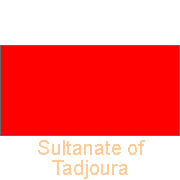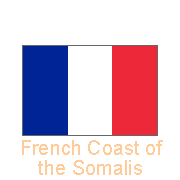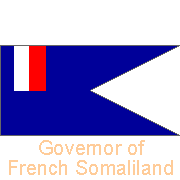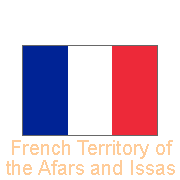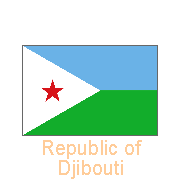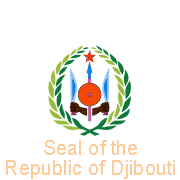Flags from Djibouti
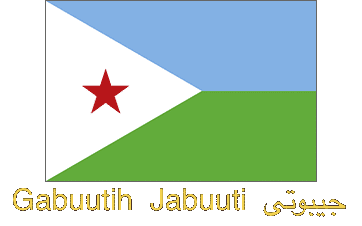
A Flag history of Djibouti
The present Republic of Djibouti occupies an area in the horn of Africa which had been converted to Islam as far back as the 9th Century and ruled for centuries by the local Afar and Issa tribes, under the influence of Arabian traders. There were in this area a few small sultanates, including the Afar (Danakil) Sultanate of Tadjoura; a plain red flag was flown here, which was also common among most states along the Arabian peninsula.
you may then send it as a postcard if you wish.
Tadjoura’s Sultan (or "Dardar", as he was called), signed a treaty with the French allowing them to moor in his port in 1862. The French called the land around there Obock until they declared it a colony in 1894 under the name of "Côte française des Somalis" (lit. French coast of the Somalis), or French Somaliland, centred around the newly built city of Djibouti; the Tadjoura Sultanate was incorporated in the colony. The French tricolour was the only flag flown from there on, although the Governor could use a blue swallow-tailed flag with a square French national flag in the fly.
In 1958 a referendum was held to determine if the territory should join Somalia upon its independence in 1960; it resulted in a vote to remain French, mainly because of the Afar people against joining Somalia plus vote-rigging by the French who had expelled thousands of Issa Somalis. In 1966 the United Nations recommended that French Somaliland should be granted independence. A second plebiscite was held in 1967 after French President Charles de Gaulle had been greeted with demonstrations and rioting when he visited. The result was the same as in the first referendum for the same reasons. The territory was renamed "Territoire français des Afars et des Issas", French Territory of the Afars and Issas, in acknowledgement of the large Afar population and downplaying the significance of the Issa Somalis. The French flag continued to be flown.
Finally, on 27 June 1977, the country gained independence as the Republic of Djibouti, and its National flag, designed by independentist leader Mr Mahamoud Harbi, was officially hoisted. The colours were interpreted as: white - peace, light blue - sea and sky, green - earth. The red star is for unity. The flag had already been flown in 1972 by the African National Liberation Union. Then the colour green stood for the Afar people and light blue for the Issas, the ethnic Somalis, who had initially voted for the country to join the new Republic of Somalia, with its light blue flag.
A seal was adopted, consisting of a laurel crown "representing peace granted to the Djibouti people after the victory obtained during the attainment of independence". It surrounds a shield and a lance surmounted by a five-pointed star, symbolising the defence of national sovereignty and territorial integrity. The shield and the lance are flanked by two hands, each holding a traditional Djibouti dagger, representing the culture and traditions of the people "as the foundations of National Solidarity".


